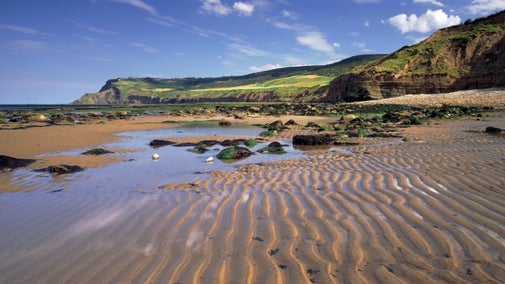
Discover more at Beningbrough
Find out when Beningbrough is open, how to get here, things to see and do and more.

With 380 acres of parkland in which to explore, the estate at Beningbrough is ideal for visitors who want a longer walk. It is also home to some rare and unusual wildlife, including birds, bats, and the iridescent tansy beetle.
The estate as you see it today was created from packaging up a much larger estate to sell in 1919. The package included around 380 acres of parkland, Beningbrough Hall, surrounding gardens and Home Farm. This was how Lord and Lady Chesterfield bought it and upon her death, it passed to the government in lieu of death duties.
In time, this estate was given to the National Trust to care for on behalf of the nation. Today, Home Farm is tenanted, and the Jackson family use the land to graze livestock.
Please note the café at Home Farm, operated by the estate tenant farmers, not the National Trust, is closed. To access the restaurant at Beningbrough, normal admission charges apply or free to National Trust members.
Choose from one of three routes to stretch out in the wider estate or join elements together for a longer walk. An entrance ticket to Beningbrough isn't needed to explore the parkland and car parking is free of charge for parkland users.
For your safety and to protect cattle and calves, please stay on the footpaths and avoid roaming across the fields. Take care when the cows are in the fields as the bull may be there too.
The beautiful iridescent tansy beetle is an endangered species and found in only three places in the UK, with the banks of the River Ouse its most northerly habitat.
These beetles live on the yellow-flowered tansy plant and you may spot them along the river in Beningbrough’s parkland in summer. Several areas are fenced off to protect the plant from grazing and erosion, and consequently support their presence.

Stepping out a little further afield can often be rewarded with a glimpse of a fox or even a roe deer. Small mammals may also be spotted, such as short-tailed voles and wood mice.
Occasionally, brown hares can be seen in the fields during winter. They have longer legs than rabbits and have black tips on their ears and tail.
In the riverside area of the parkland, swallows and sand martins are often seen feeding over the water. Look out for colonies of sand martin nests on the opposite bank or the occasional flash of colour from a kingfisher.
There are green and great spotted woodpeckers around – you might hear them before you see them. Three different owl species have made the estate home; little owls are the ones to look out for in the parkland, often on a tree or flying silently along at dusk.
With a wooded parkland full of mature trees and grassland, Beningbrough is a destination for the local bat population, and is home to five different species including the soprano pipistrelles, noctule, Daubenton’s bat and brown long-eared bat. With the UK's bat population sadly in decline, their status as a protected species is vital to help ensure their continued survival.

Find out when Beningbrough is open, how to get here, things to see and do and more.

Bring your dog to Beningbrough and you'll both have a great day out on one of Yorkshire's finest estates. Here are some ideas to help you get the most out of your visit. Beningbrough is a three pawprint rated place.

Discover the formal gardens, walled kitchen garden, herbaceous borders and wildlife areas, each with its own style and beauty. Experience the tranquillity of the Mediterranean Garden, the latest new space designed by Andy Sturgeon. Find out more about this RHS partner garden in Yorkshire.

Choose from a range of tasty snacks and drinks at Beningbrough's restaurant and two other eateries, open on selected days. Find out where to refuel with your dog, indoor and out. Stop off at the stables shop to find a range of gifts inspired by the places we care for and large outdoor area with plants in the growing season.

Discover the many opportunities to stretch your legs and explore the coast and countryside across Yorkshire – whether you fancy a gentle stroll through a deer park, a refreshing hike in the Dales or scenic route along a coastal path.

The Fine Farm Produce Awards are open to the National Trust’s 1,300 farmers, celebrating the very best in sustainable farming – discover our past winners here.

The places we look after are home to every kind of bat that lives in the UK. Use our handy guide to identify different species and find out where to spot them.

Looking to catch a glimpse of a red squirrel or a rare butterfly? Follow our top tips for getting up close (but not too close) with wildlife.

Find out how the changing seasons affect the birds you’ll see out and about, with spotting tips and photo galleries to guide you.